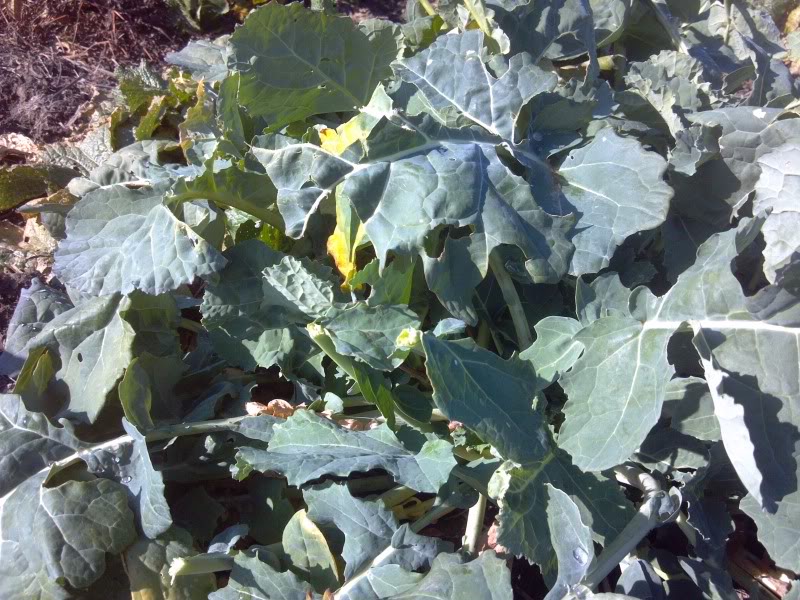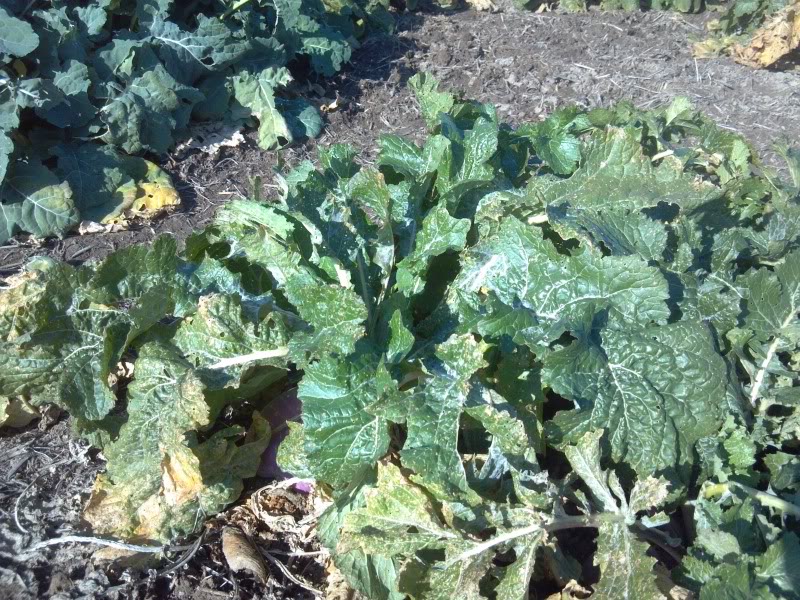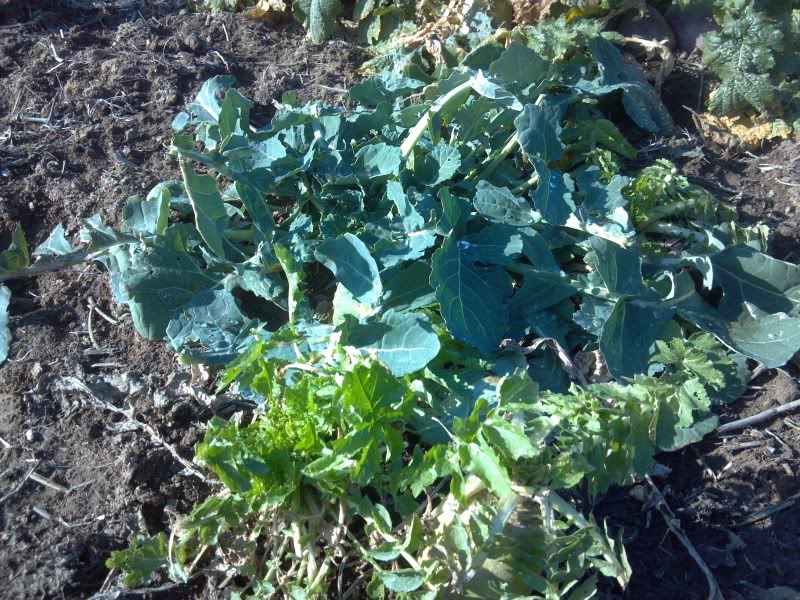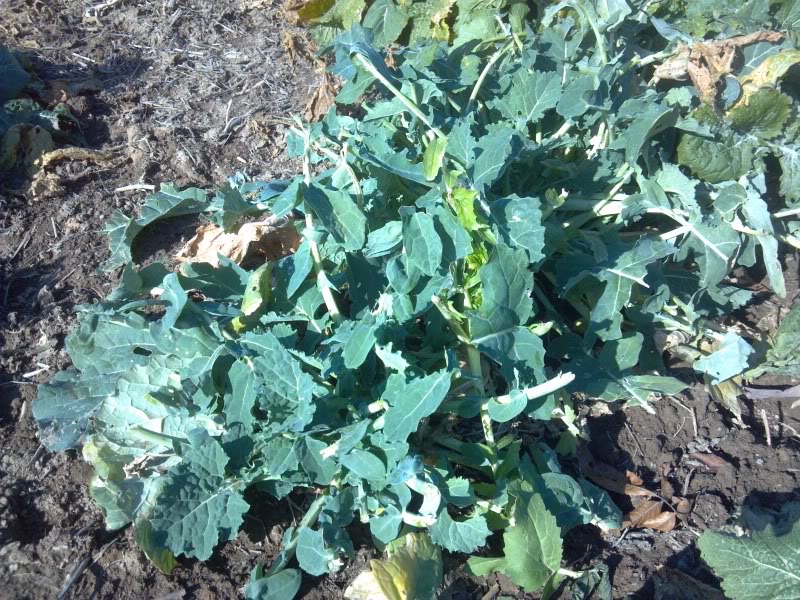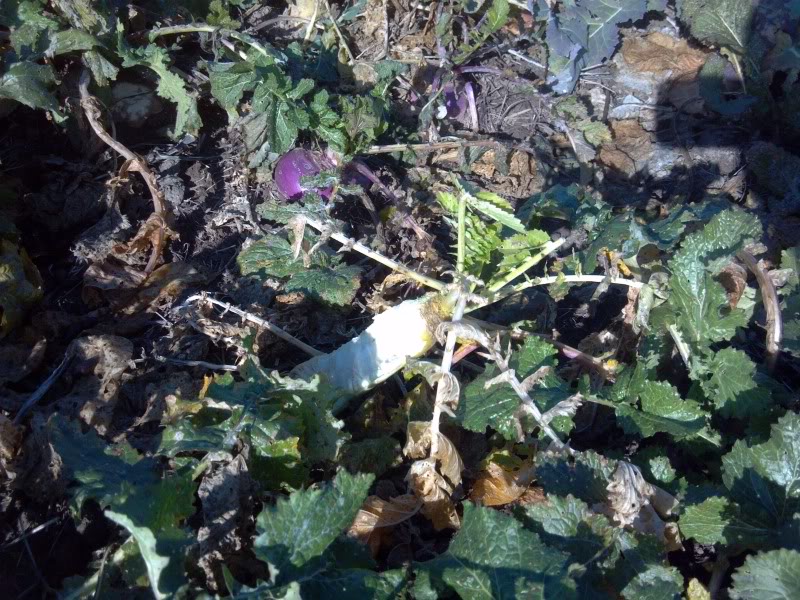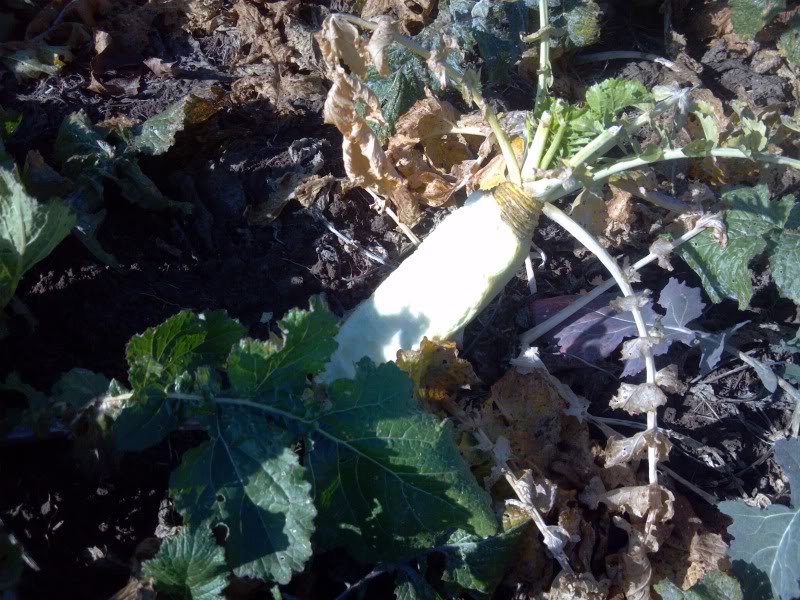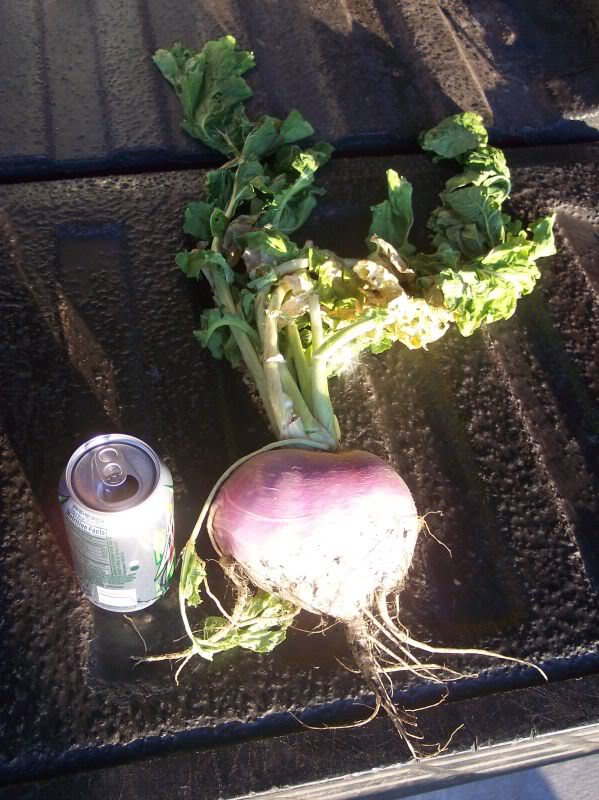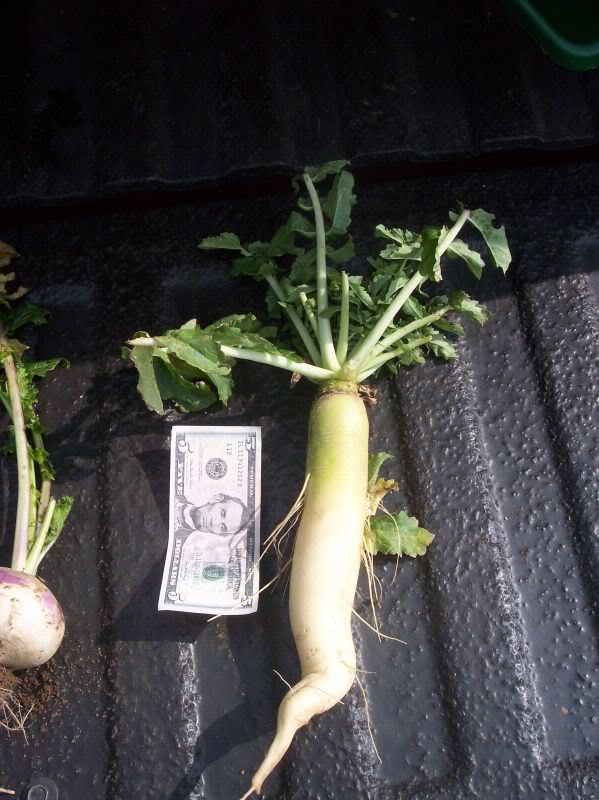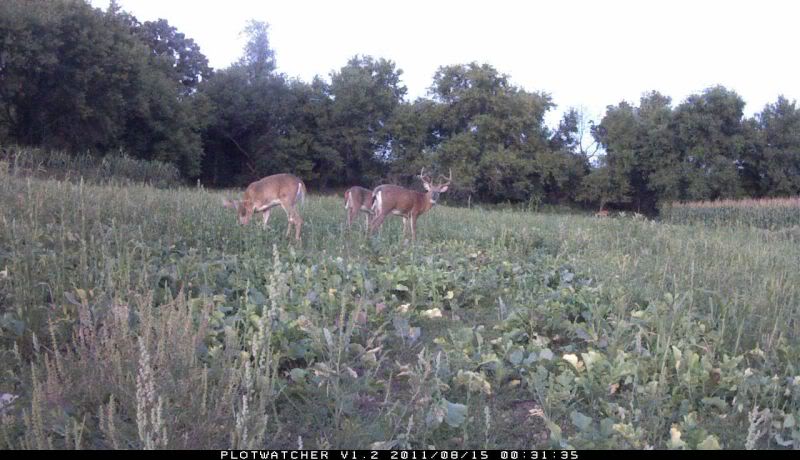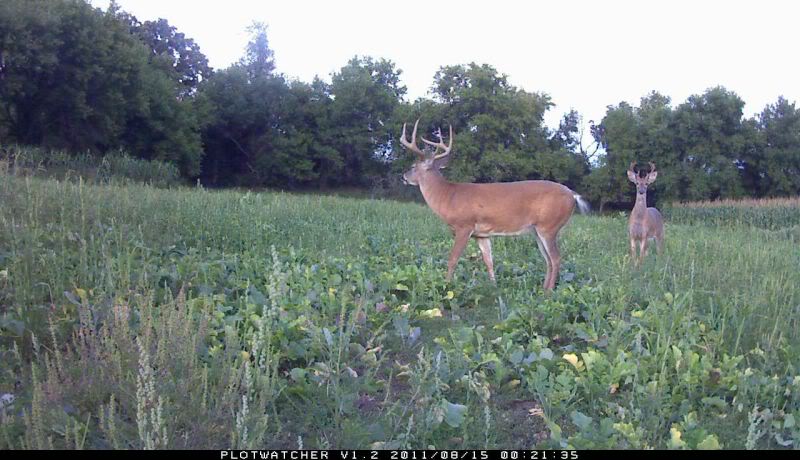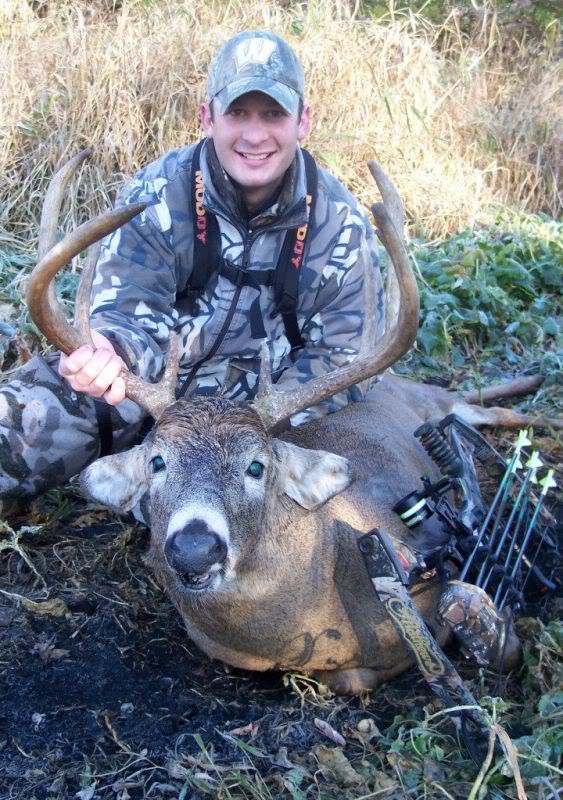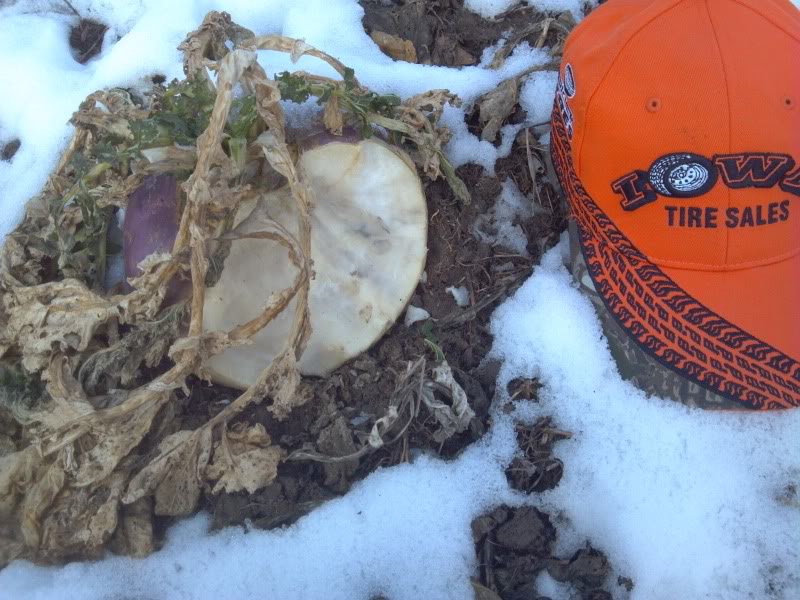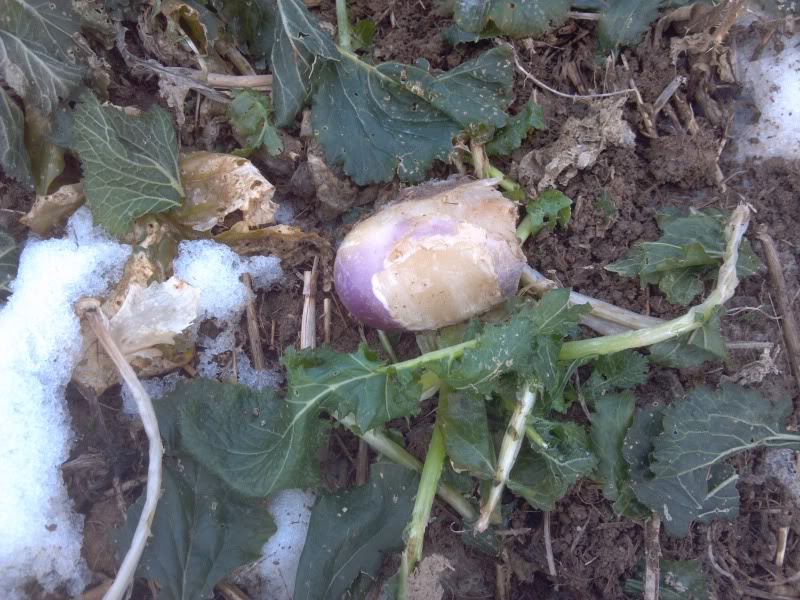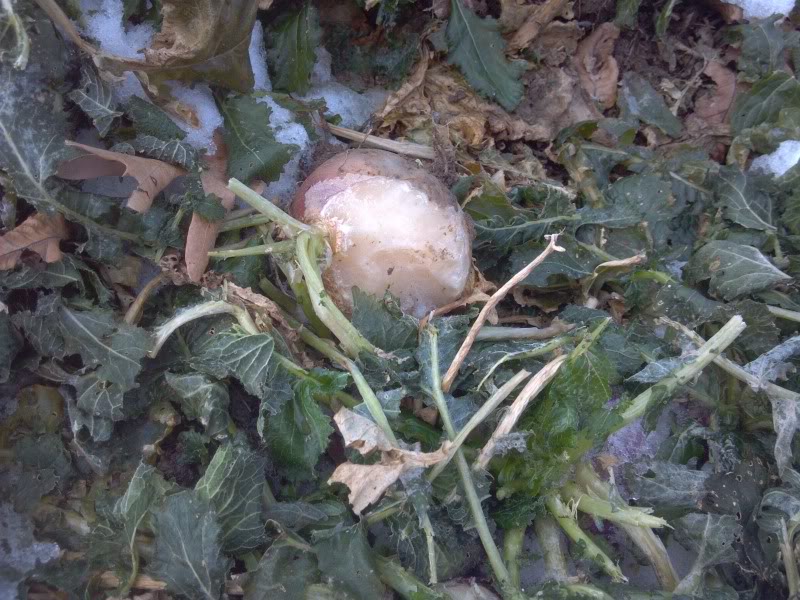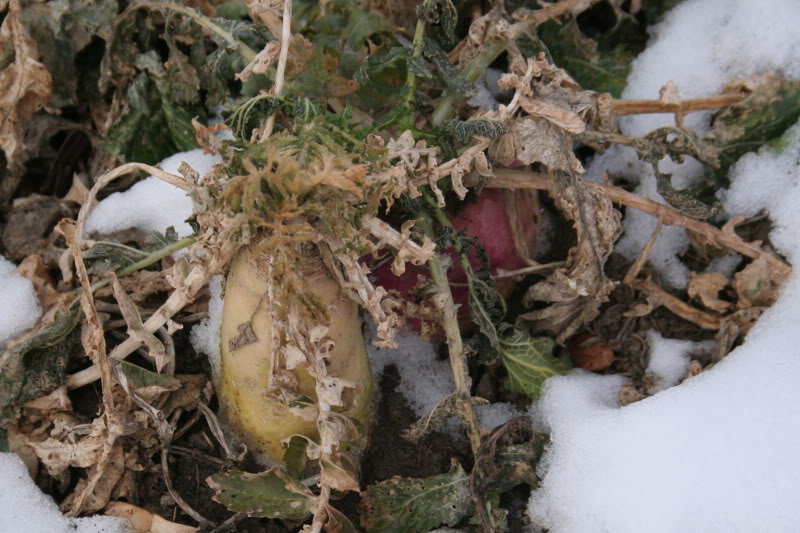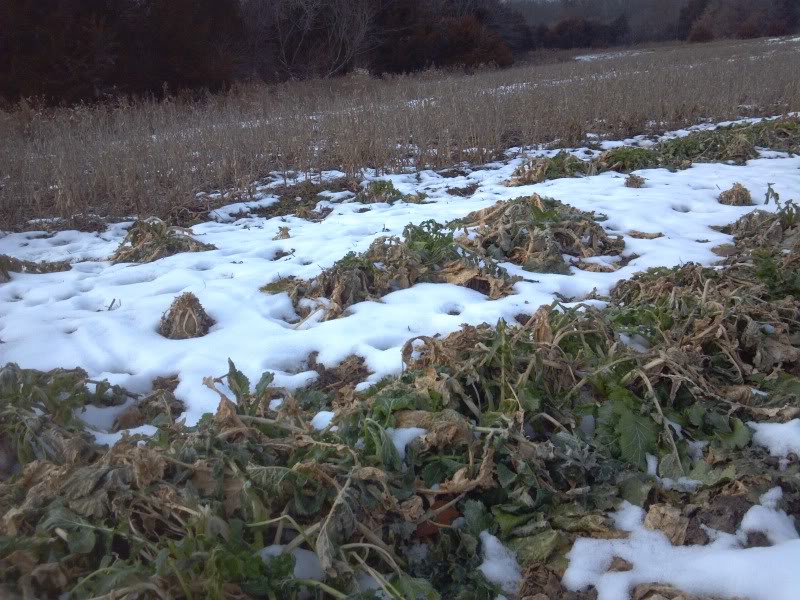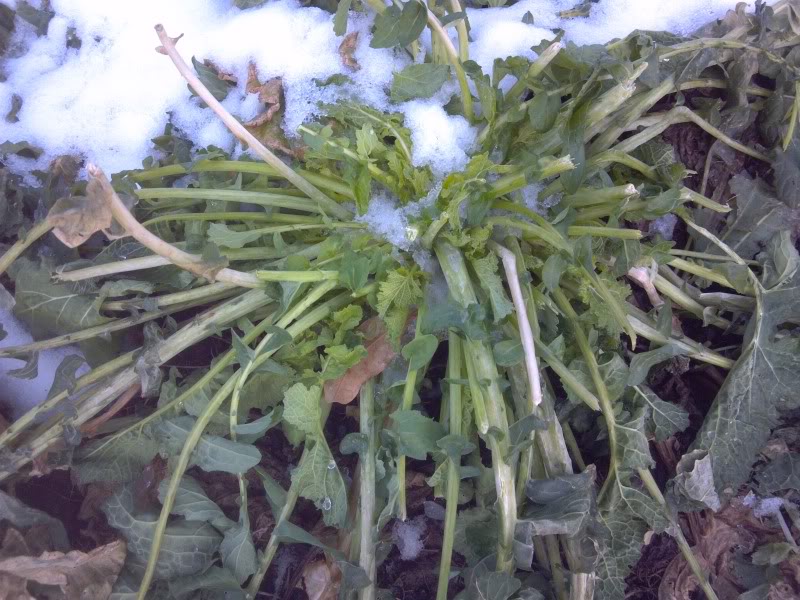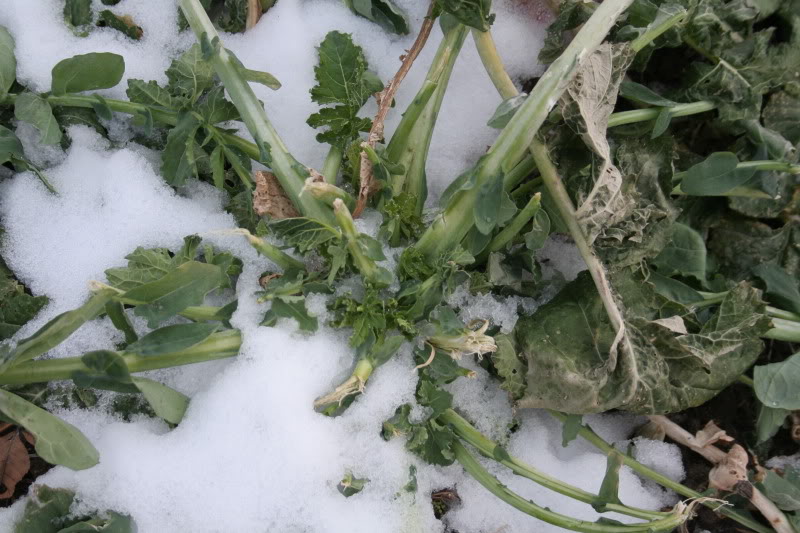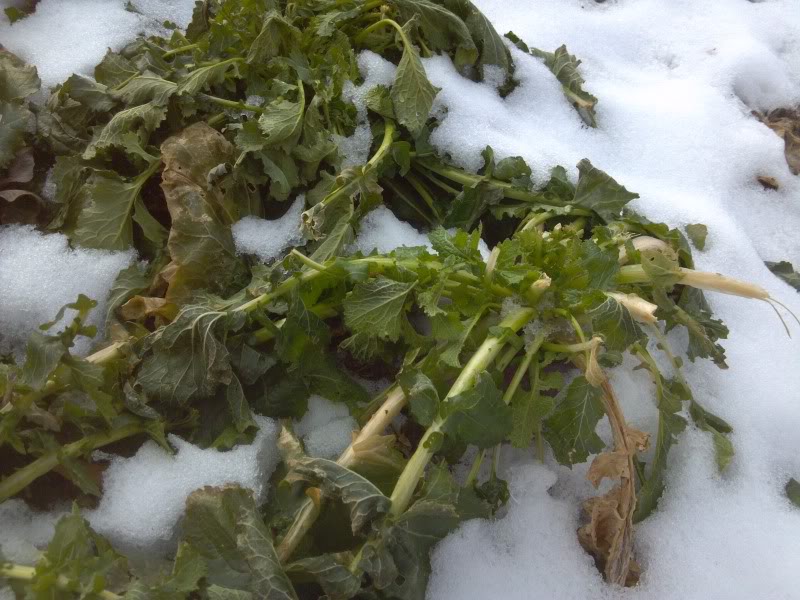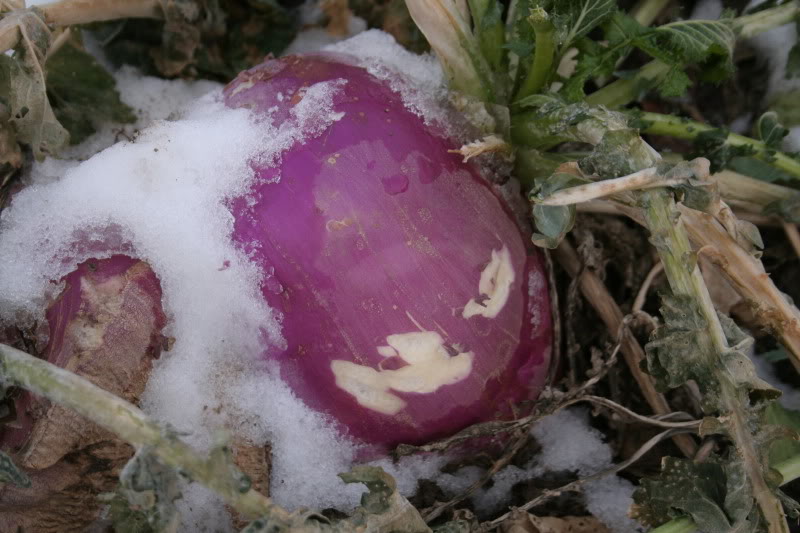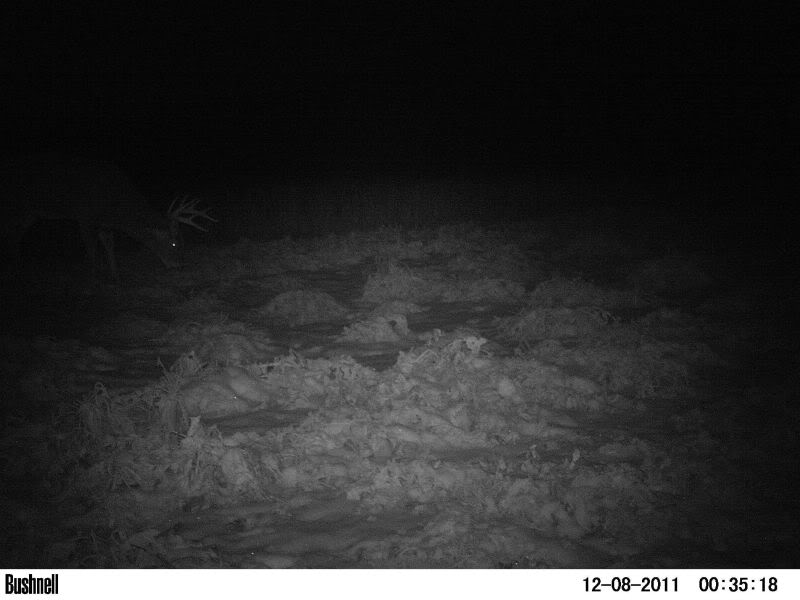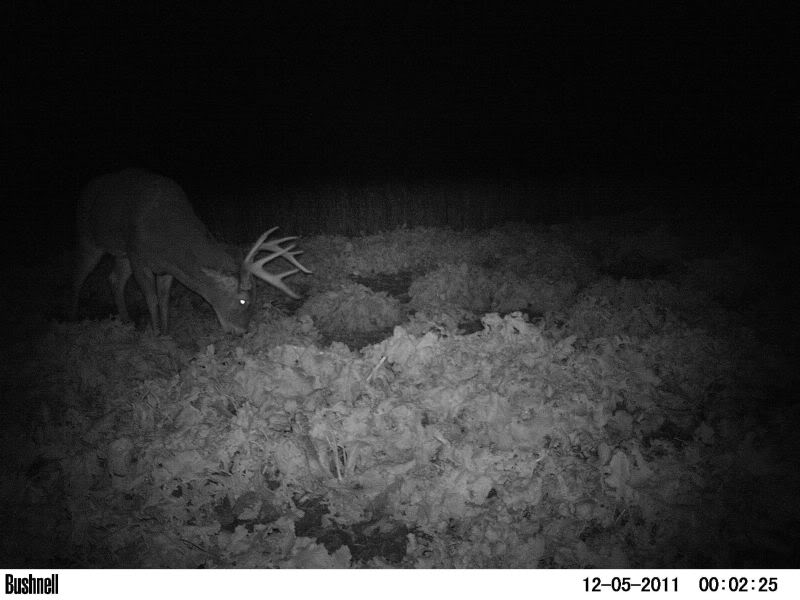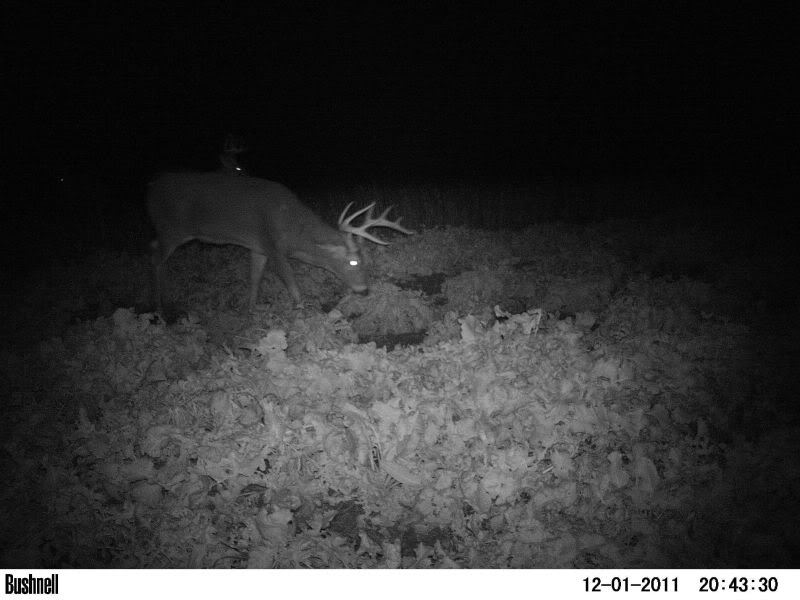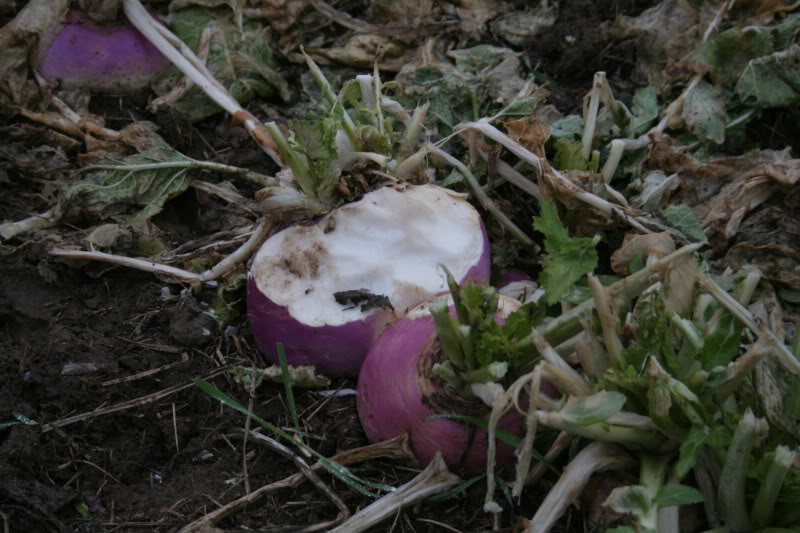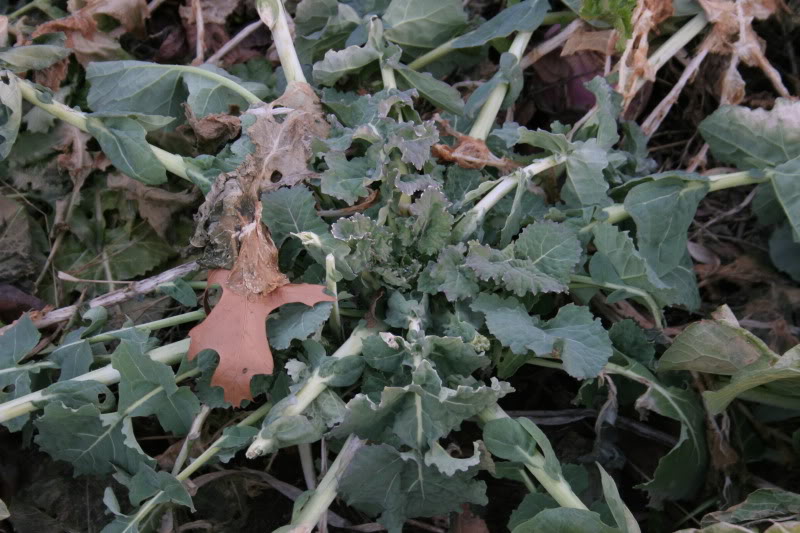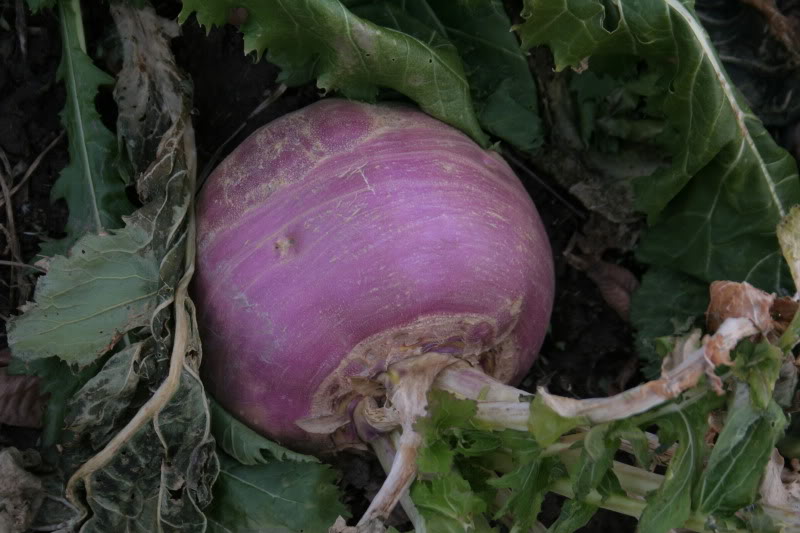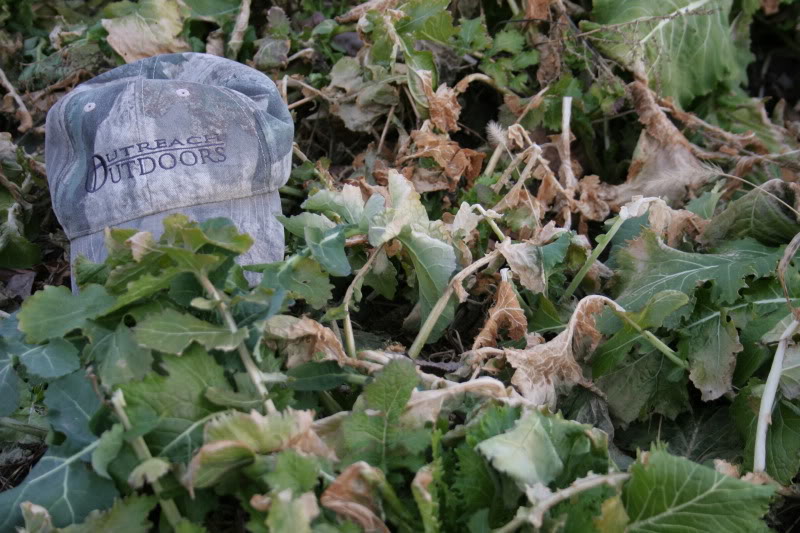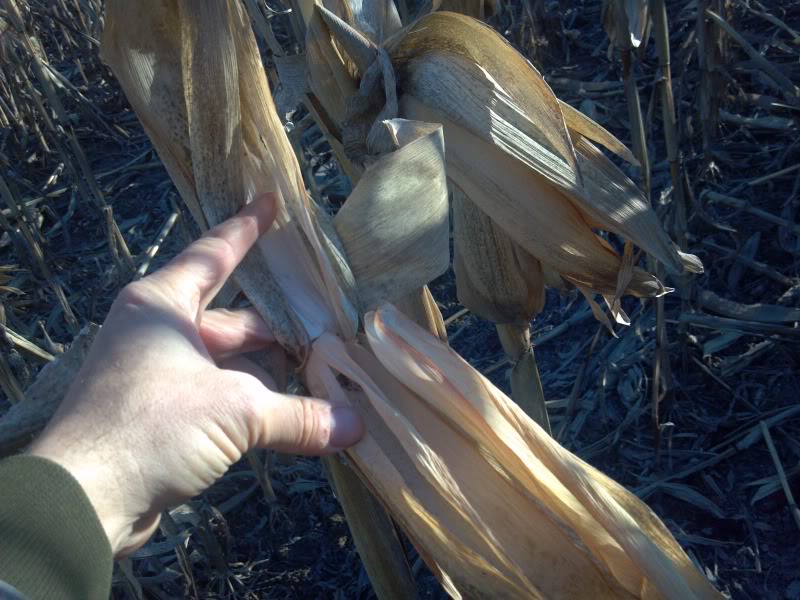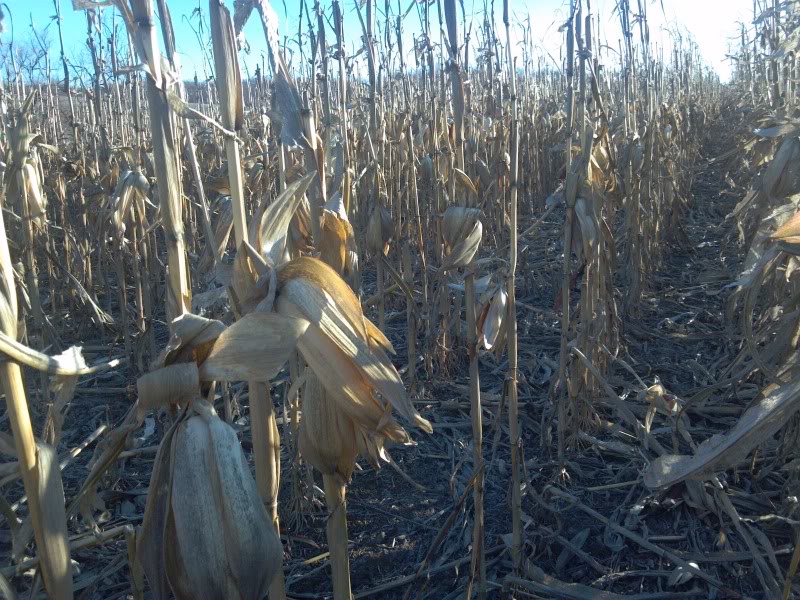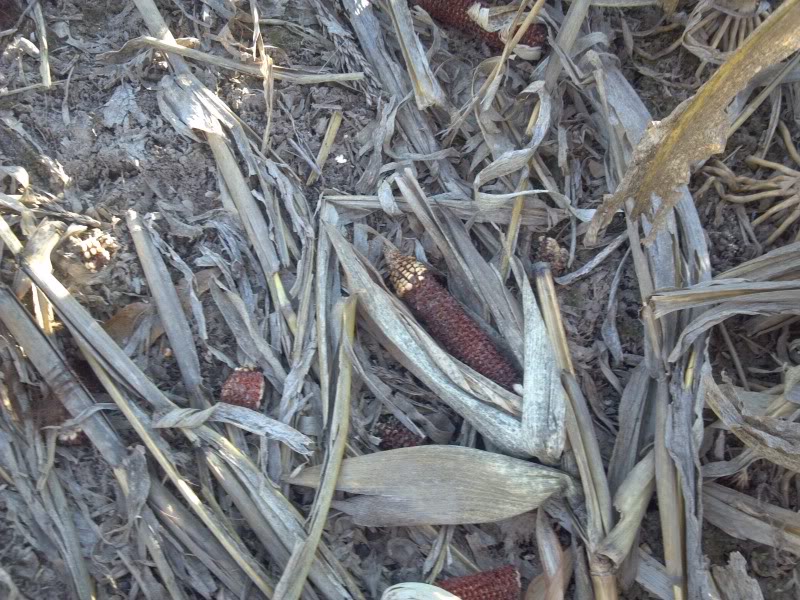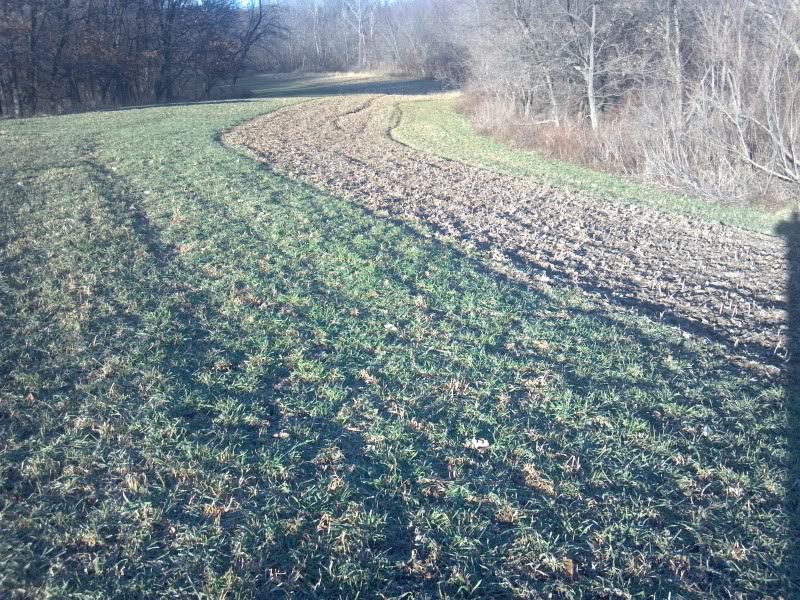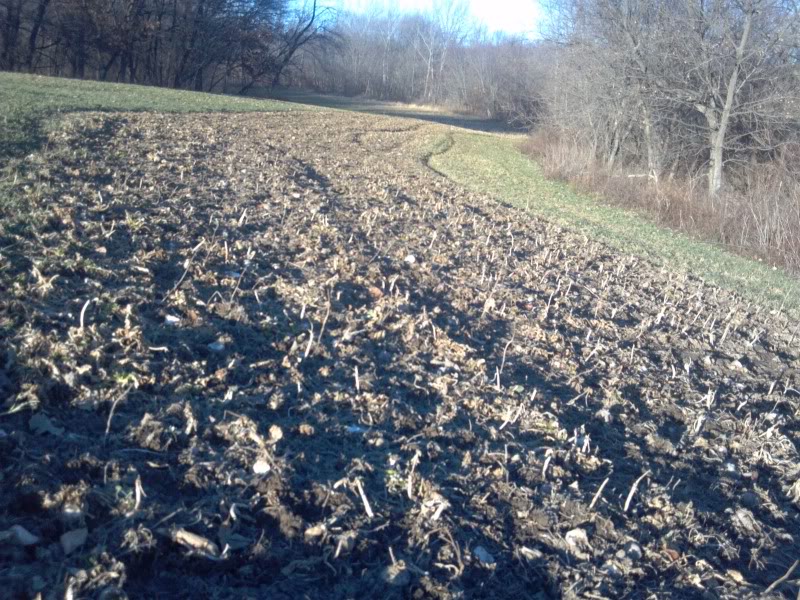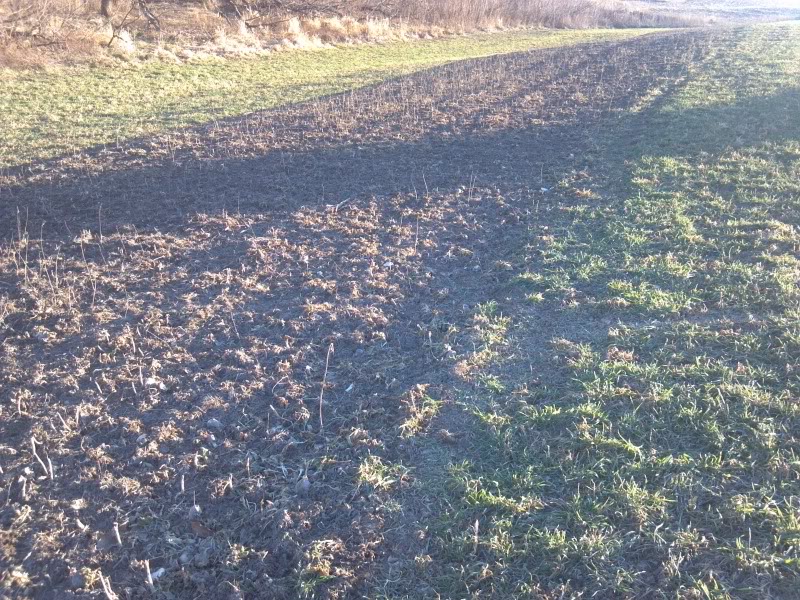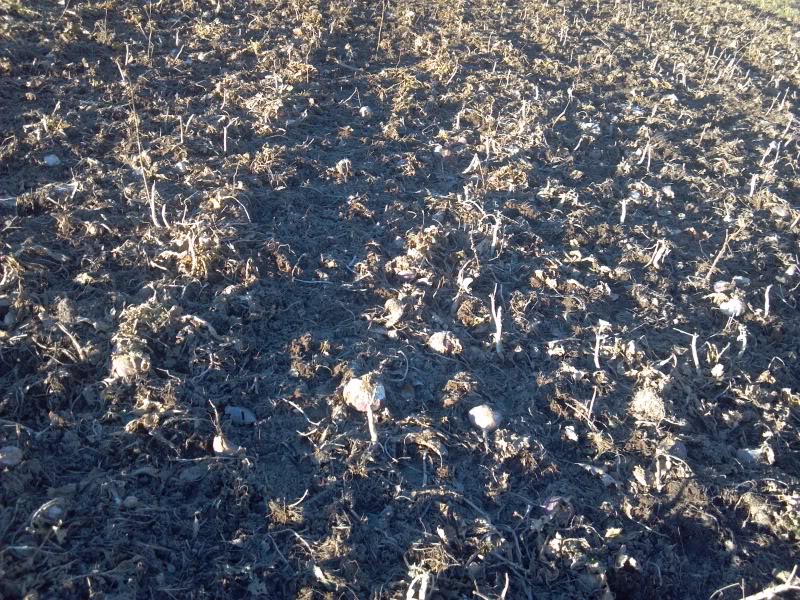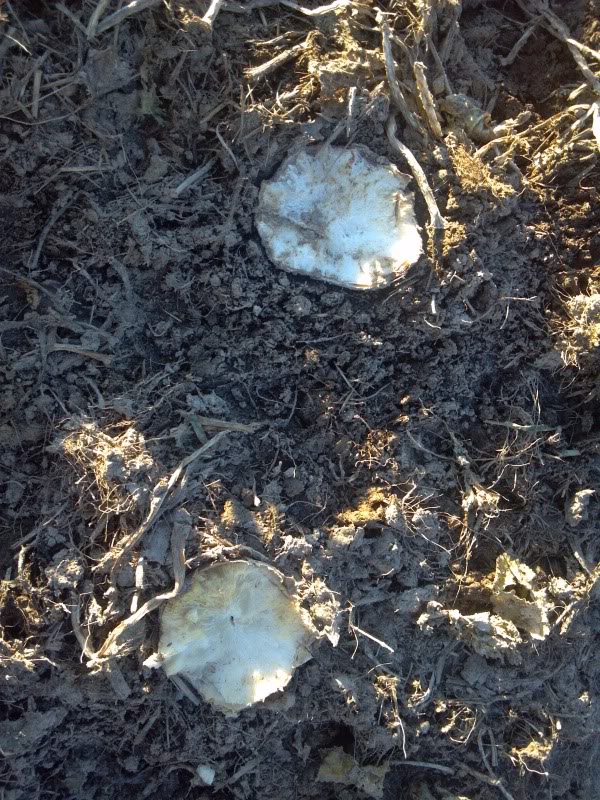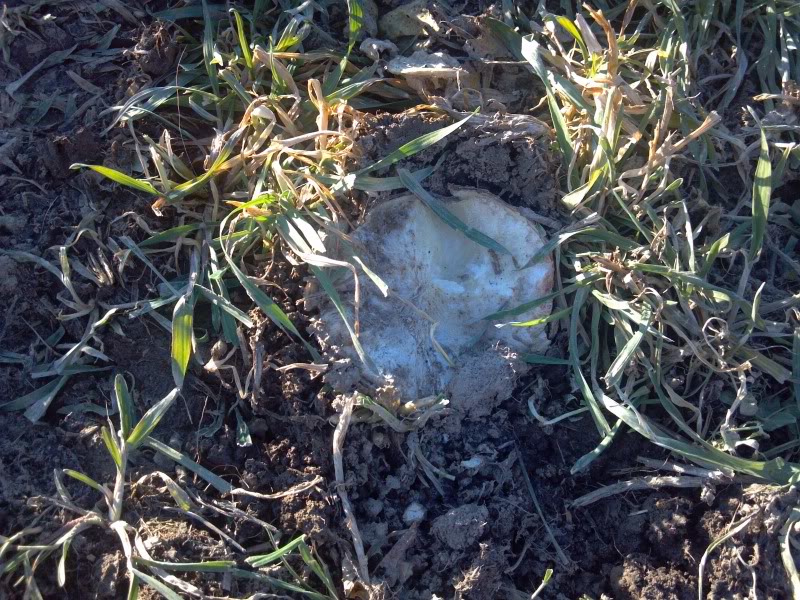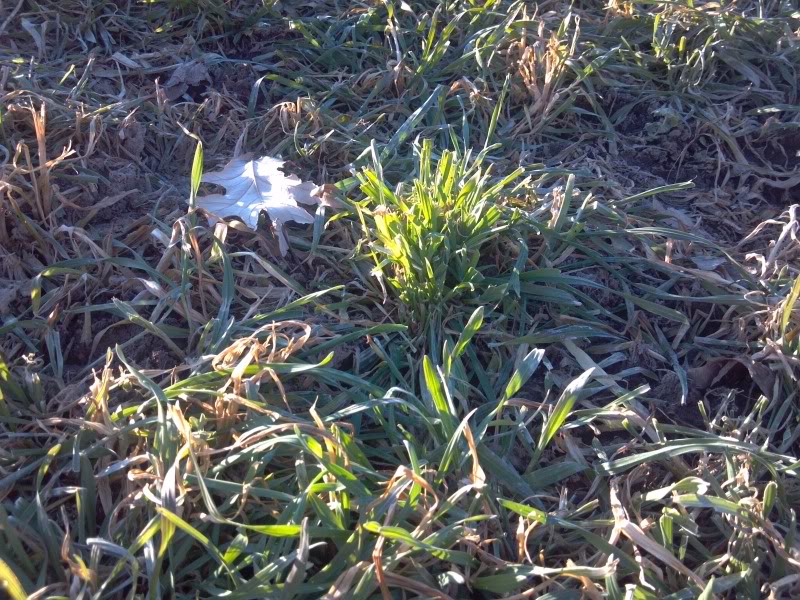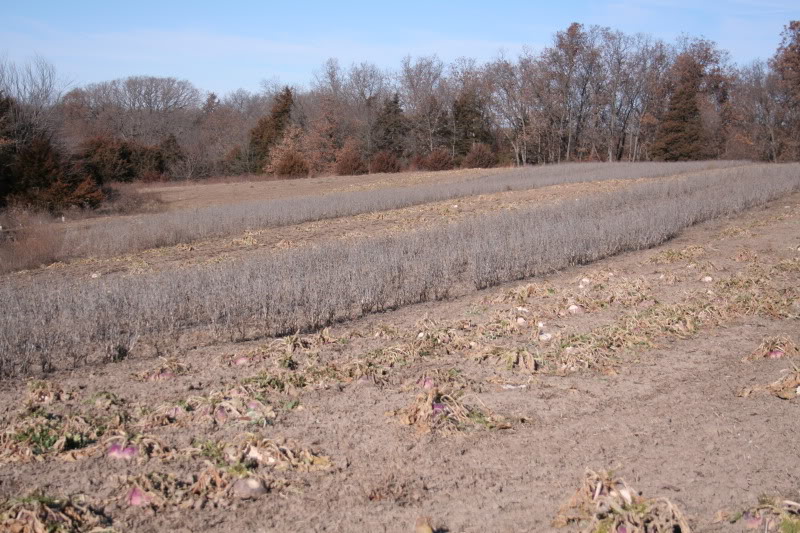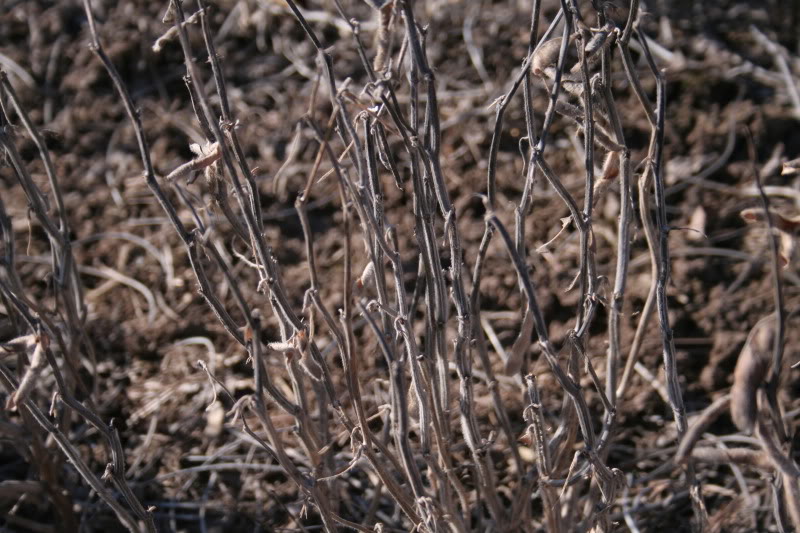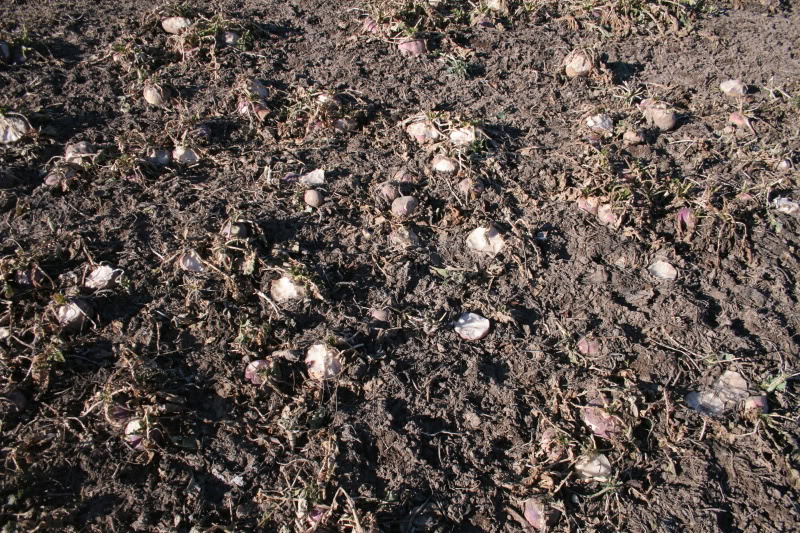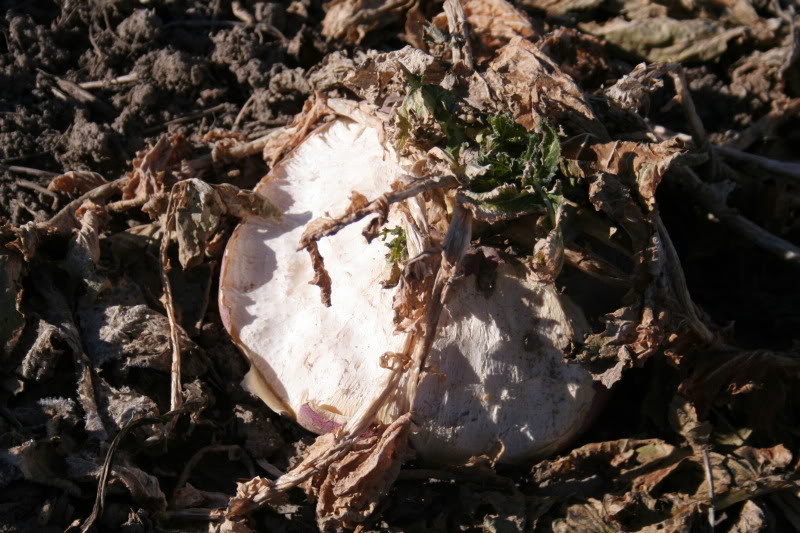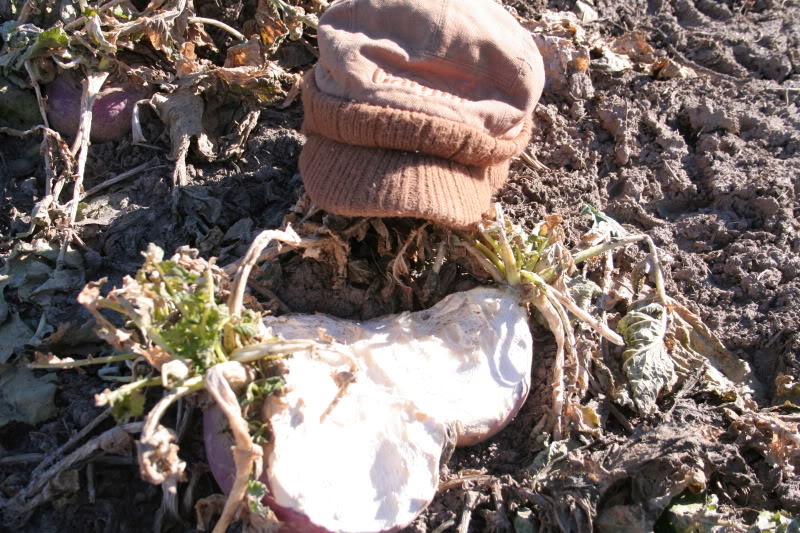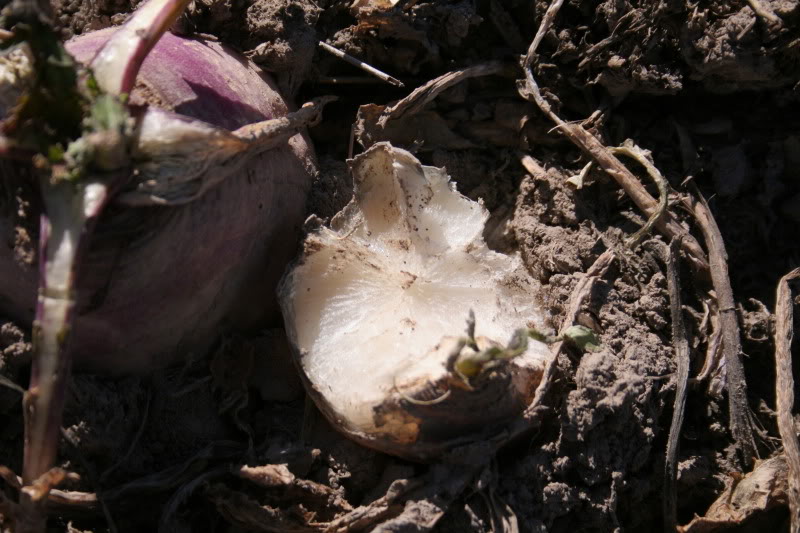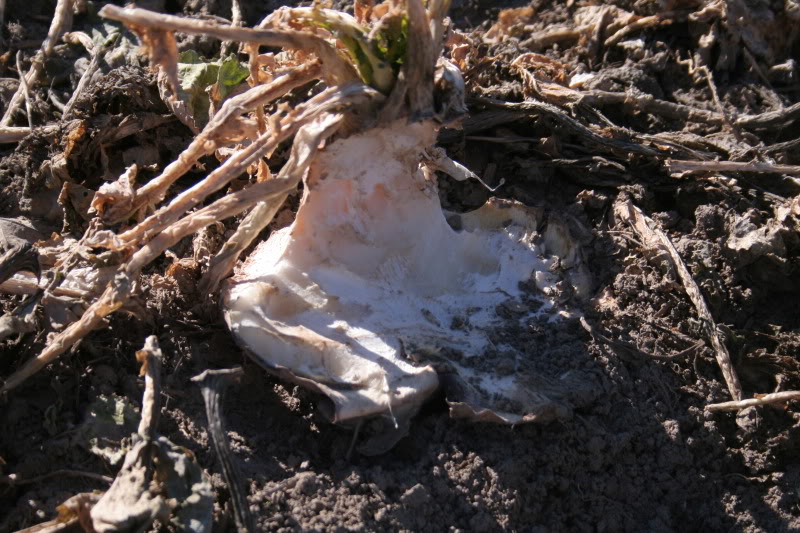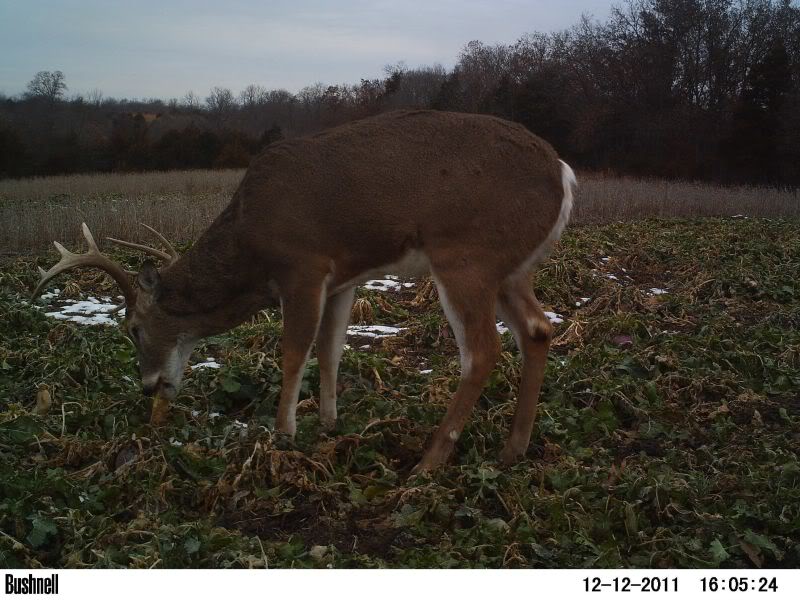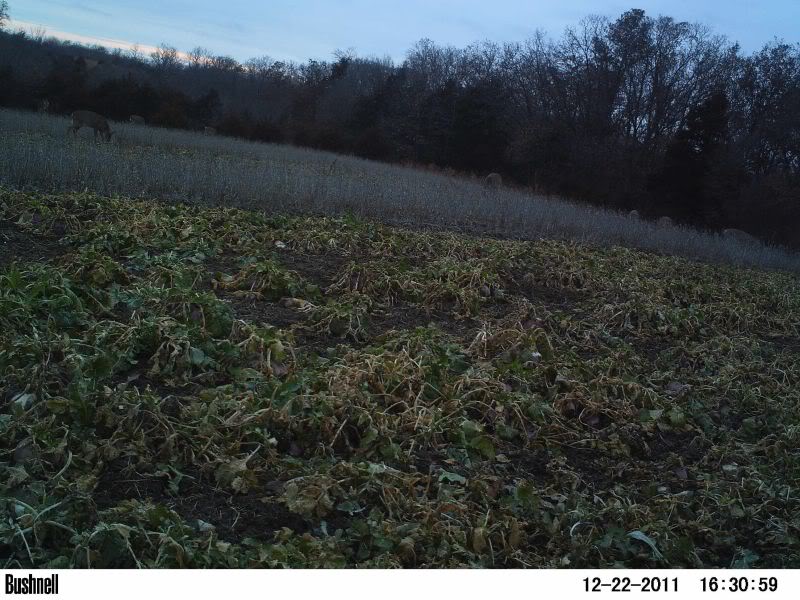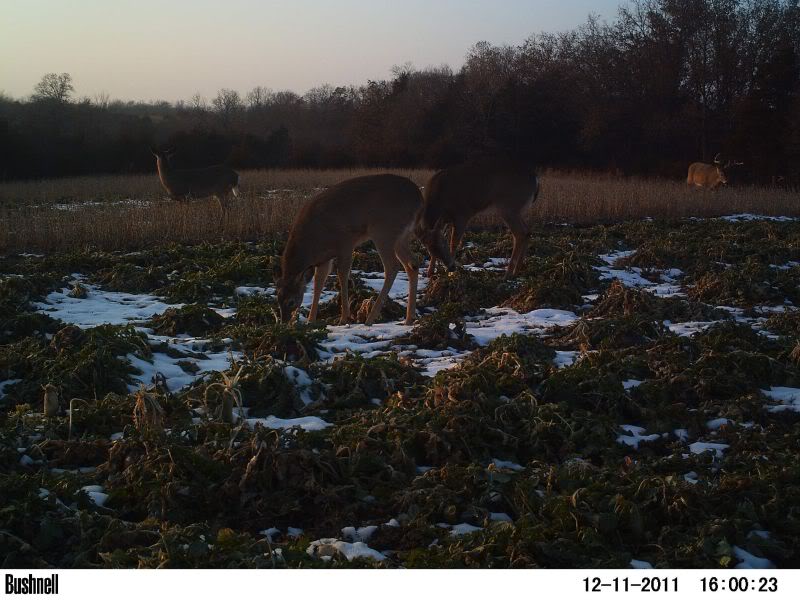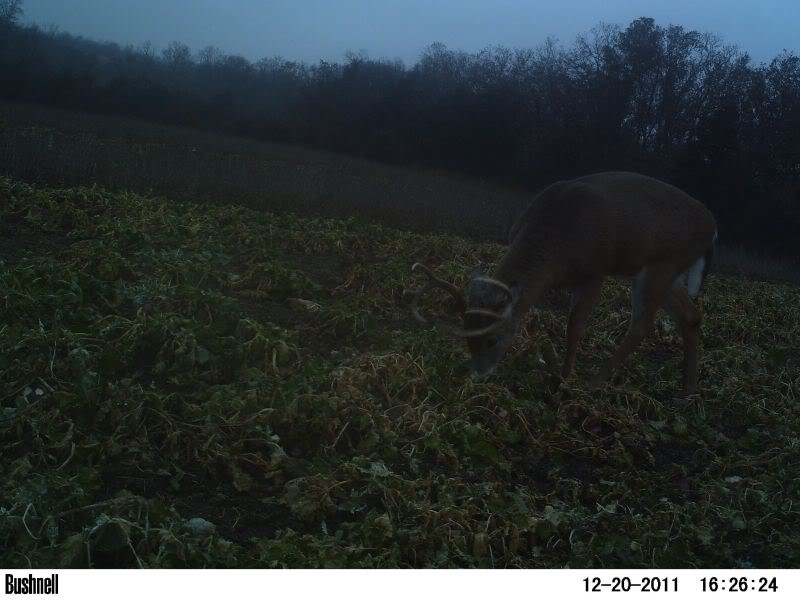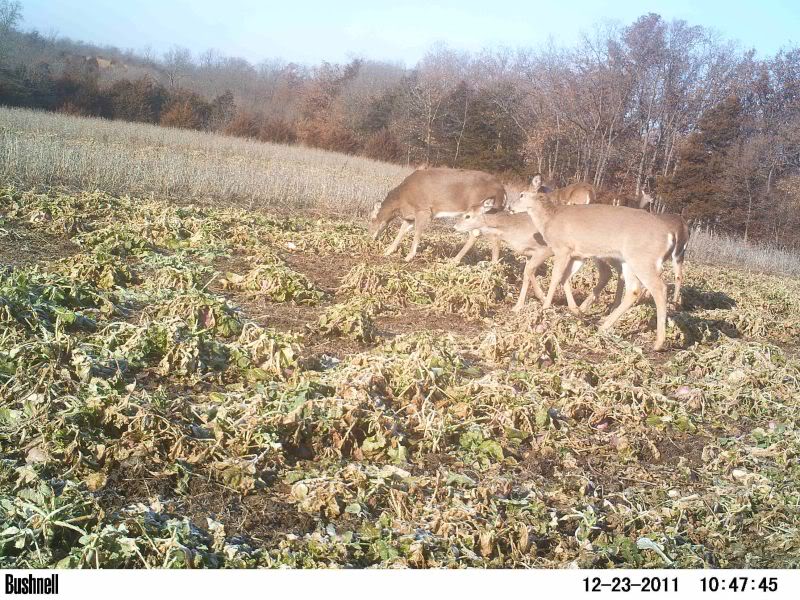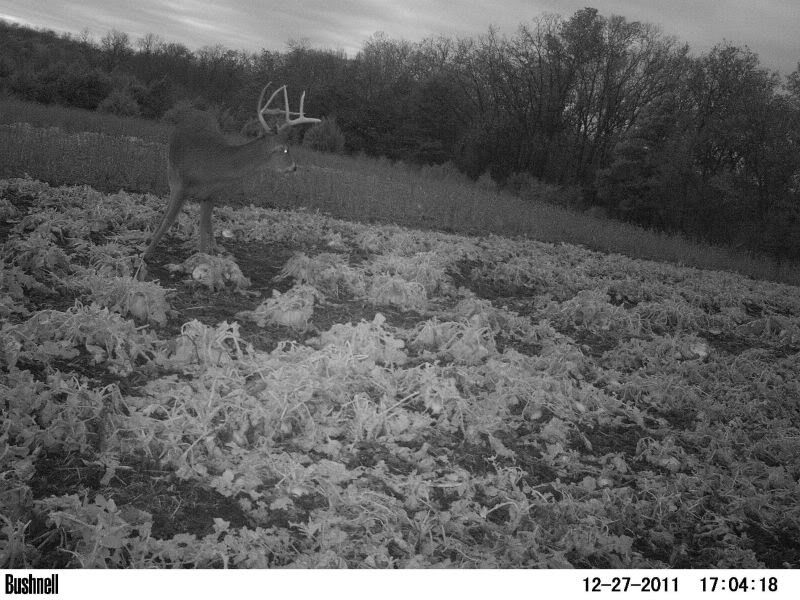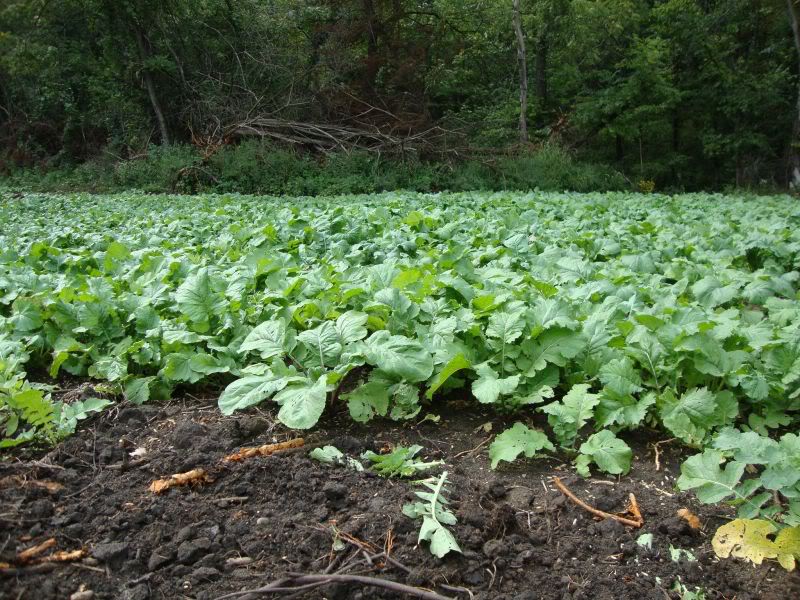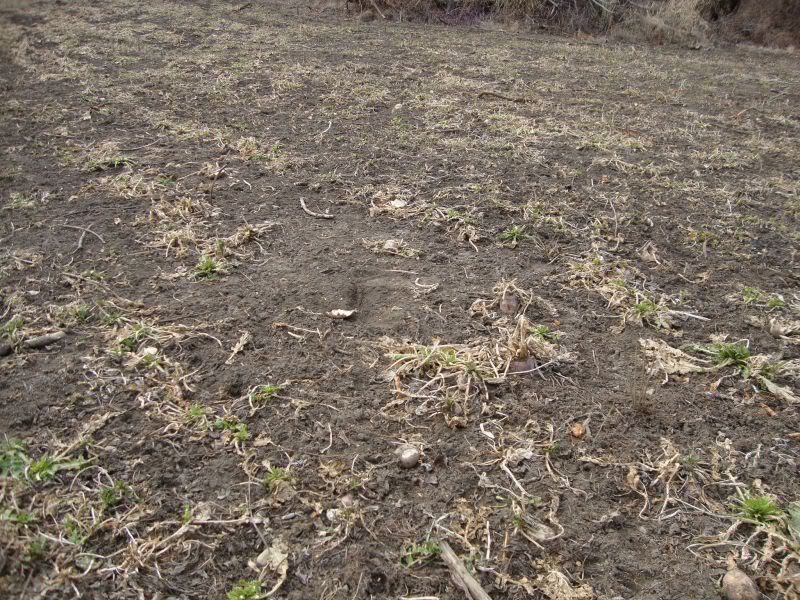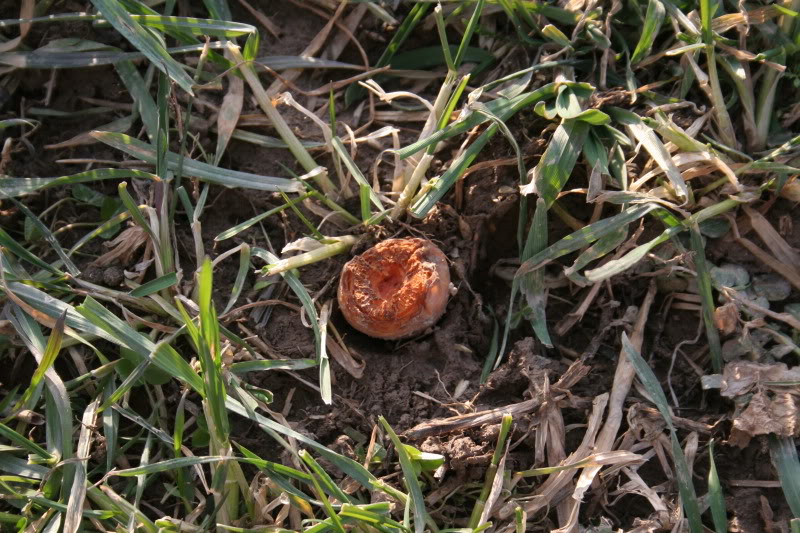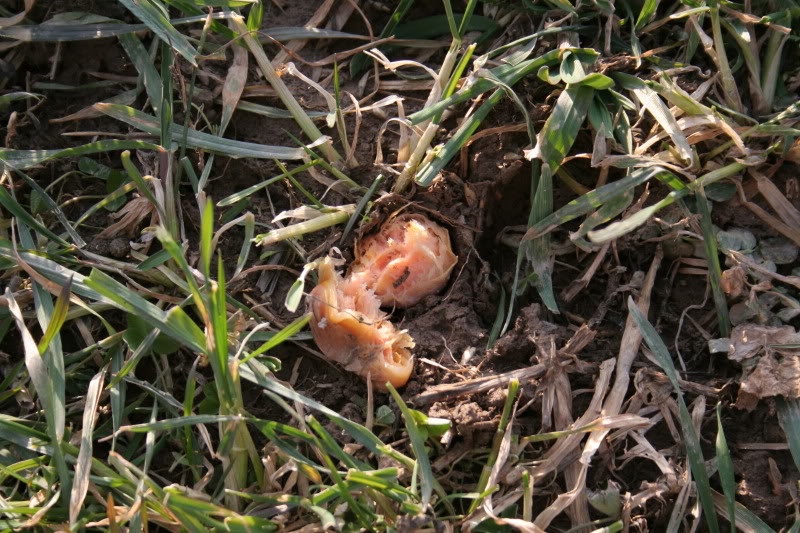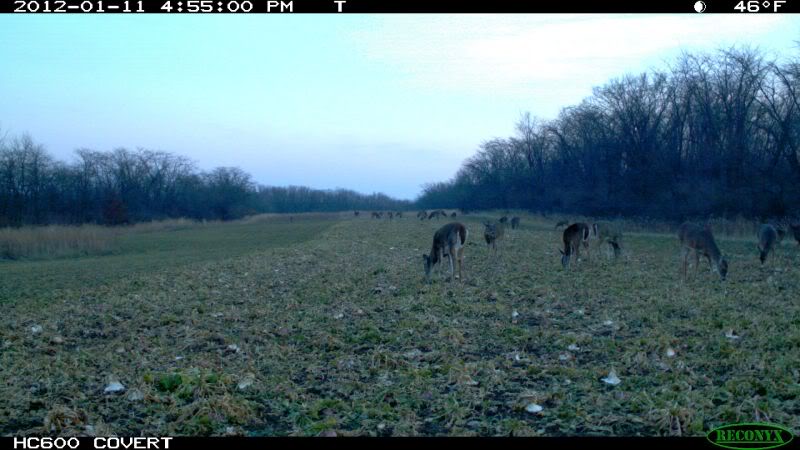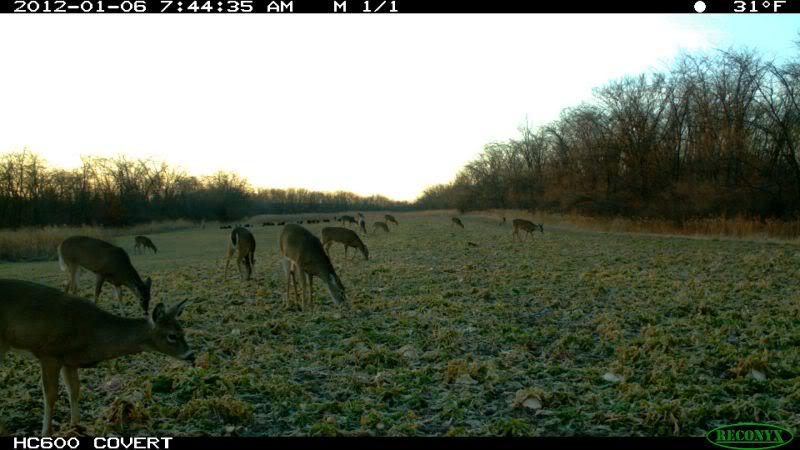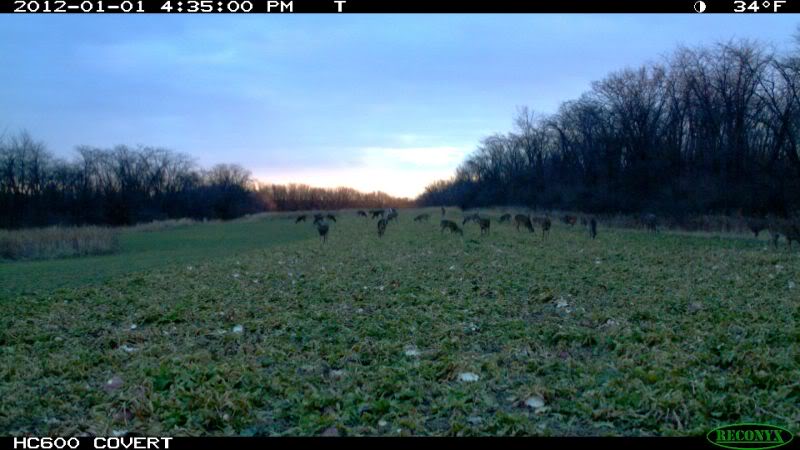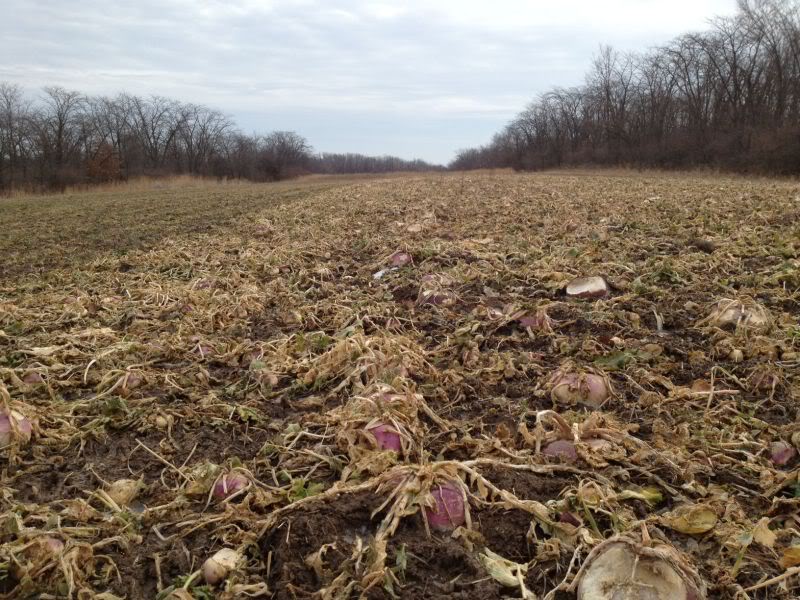January 6th, 2012
I shared in a recent post about how easily and quickly corn can be decimated leaving behind an empty field that leaves nothing to hold whitetails on our property and soybeans are often the same way. There always exceptions and now and then someone combines the left over grain n the spring because they have been uneaten. Anyone with any number of deer however will usually find that corn and beans may last only a few weeks or worse yet be wiped out by the end of summer and it is for that reason I have settled on the white clover/brassica/rye combination crops to keep deer fed year around in high deer density areas.
The following is a field where we tried white clover/brassicas and soybeans this year and while the soybeans did great the landowner was disappointed to find that the beans lasted only a few weeks ...and this during one of the mildest winters we have had in some time!
The strip crop method allows us to have all the crops mentioned in one field which in turn adapts deer to coming to one place 24/7, 365 days a year.
Unfortunately in this case the soybeans didn't last long
The huge turnips however are feeding deer and keeping them coming back for more!
We fertilize the brassicas heavily and use caution not to over seed and the results are outstanding!
They eat the big Purple Tops like apples!
and these things, despite a severe drought....got huge!
Often landowners have problems initially with deer refusing to eat brassicas but by adapting deer to finding feed in our feeding area with white clover...something that is available nearly every month of the year,,,they come to depend on that feeding area and quickly adapt to the brassicas.
In this field as has been the case in 100% of the fields i plant for other landowners ...whitetails began eating the brassicas within 30 days of planting and don't stop until every last morsel is gleaned from the field...this where deer have never tasted a brassica in their lives!
By adding the irresistible Groundhog Forage radish, deer quickly adapt to brassicas focusing on them as soon as the GHFR is roughly 8-10" high. Do not however make the mistake of planting ONLY brassicas, incorporate areas of white clover and split the feeding area between brassicas and the rye combination mix to allow for yearly rotation.
Right from the get go I have shared pics in this field of deer walking thru soybeans to get to the brassicas, starting when they were still green and deer focused on the GH forage radish.
and it hasn't changed...only know they are eating the GHFR roots!!
While soybeans are certainly useful...they also are not necessary to hold whitetails
In this pic you can see deer feeding in each brassica strip as well as white clover in the background
No more deer fed in this field with soybeans then when the soy strips were planted in rye
So don't be misled into thinking they hold the key to a field full of monster bucks
We have been providing year around food sources in this field for 4 years now, so deer are adapted to it and focus on it regardless of what we plant
The advantages of using the rye/oats/peas/radish/red clover combination are many....they can NEVER run out of feed! Winter rye continues to grow at temps as low as 34 degrees and no other commonly grown crop, including wheat can do this. This means about the time the turnips are gone the rye will not only still be there but will provide feed during a critical time period in late winter/early spring. The red clover will take over from there and provide food sources until tilled under for a rotation to brassicas.
If you do plant soybeans as part of your program be sure to plant early maturing beans that dry down in late August, then overseed the soybeans with rye and radishes so the field is not left barren and empty. In this case severe drought kept the rye from germinating until it was too late to provide much forage.
There is no one size fits all when it comes to habitat and the more diversified your plantings are the less your risk of having a crop failure and the greater your odds of providing year around food sources. Brassicas are one very dependable food source that can provide feed for a longer period of time then either soybeans or corn and easily grown by almost any landowner and any budget.
Use any combination of crops but be sure to keep them in one feeding area that is centralized or several small areas that together are in a central area of your property and regardless of size, plant them ALL in the same feeding area. The following is what I have found to be the most reliable and cost effective crop combination to attract and hold whitetails year around with even the highest deer densities.
Plant ALL in one plot in strips or blocks
Alice (or comparable) white clover 10% of plot...plant with the rye mix below and soil test for needed P&K/lime requirements. Lacking a soil test I use 400#'s of 6-28-28 and 500#'s of pel lime in my area.
Brassicas in 45% of plot
Purple Top Turnips 3#
Dwarf Essex Rape 2#
GroundHog Forage radish 5#
Plant in mid to late July in most midwest states, or 60-90 days before your first killing frost. Use 200#'s of 46-0-0 urea, 400#'s of 6-28-28 (or comparable such as 400#'s triple 19 ) Add lime per soil test. Follow the dead brassicas with oats and berseem or crimson clover in mid spring and no fertilizer is necessary at that time.
Cereal Grain combo in 45% of plot
Winter rye 50-80#'s per acre (56#'s = a bushel)
Spring oats 80-120#'s per acre (32#'s = a bushel)
Austrian Winter Peas or 4010/6040 Forage peas 20-80#'s per acre
Red Clover 8-12#'s per acre or white clover at 6#'s per acre
Groundhog Forage Radish 5#'s per acre
Plant in late August to early September, if following well fertilized brassicas only 100-200#'s of urea may be needed but first time plantings may need to be fertilized and limed as the noted for the brassicas.
Rotate the brassicas and rye combo each year
 So now i am thinking about putting the west 3 acres into crp for cover and extra $$. I just dont want to short change myself on the food as this is the first year i have foodploted this whole area. Counting on late muzzy.
So now i am thinking about putting the west 3 acres into crp for cover and extra $$. I just dont want to short change myself on the food as this is the first year i have foodploted this whole area. Counting on late muzzy.



